Rogers'
Patent Mitre Planer.
Not too long ago, a local auction
that I look in on once in a while was advertising a bunch of whaling-related
items (photos, journals, books) and some other things of interest to me.
One of these was the lone tool mentioned in the auction listings -- a Langdon Mitre Box. Well, ho hum. I'm not really a fan of mitre boxes.
I have all I need (one) for personal use, and because the usual sizes are so
large and bulky they are not worth my while to pack and ship them to customers.
So I ended up going to the auction for the whaling stuff. Actually, I
bought a number of interesting books, including a couple on Arctic Exploration
(something that I do collect), and a quite nice journal of a legal dispute over
the condemnation and sale of a whale ship in Hawaii in 1874. But before I
could look at the whaling stuff, as I hustled through the pouring rain from
parking lot to the auction house door, there was the "Langdon Mitre Box" sitting
outside the door--in the rain. And, of course, it wasn't the mitre box as
advertised, it was the Rogers' 1882 patent mitre planer, produced initially by
the Langdon Mitre Box Company (and later by Millers Falls) as a professional
grade mitre machine, capable of producing extremely accurate mitre joints in
picture frames, or for mitering at any angle, with any shape of stock, with
great accuracy. It is not a commonly found tool, and this was the first
one that I could remember seeing.
I spoke to the auctioneer before
the action started and mildly rebuked him for letting the thing sit out in the
rain. His response was that it was very dirty, and could use a washing
off. It was pretty clear that he was completely unaware of the scarcity or
value of the machine. As the auction dragged on I bought a couple of whale
ship pictures, including a nice one of a cooper dealing with an oil cask on a
New Bedford dock, and whaling related journal--which proved to be the most
valuable thing sold in the auction. As the auction dragged on, I finally
requested that the "mitre box," in the rain, be auctioned. Still sitting
outside it came up with a first offered price at about a tenth of its value.
When no one bid, I cut the suggested opening bid in half. No other bid
followed, so I found myself with a good deal, and 60 pounds of soaking wet cast
iron. By then the rain had stopped. So it was loaded into my pickup,
and came home with me.
The next day, with the tool dried
off, I began to find what a good deal I had. Except for a little rust on
the back stanchions of the plane body support, and some grease to clean, the
machine was in excellent condition, retaining most of its original red, green
and black paint, and even retained most of the gold highlights on the cast
patent information, and maker (Langdon Mitre Box Company). The plane body
carries two hefty (3 1/2" wide) blades marked by the Simonds Manufacturing Co.
of Fitchburg, Mass), which are proper and clean. The plane body glides
effortlessly in its track, and cuts precision mitres in each direction.
With all of the proper stops, knobs, and adjustments. This is a
spectacular machine.
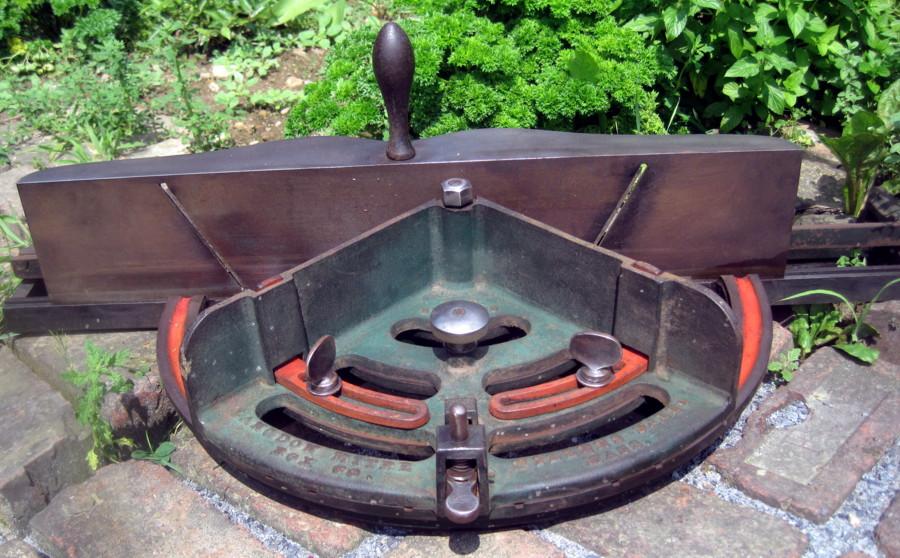
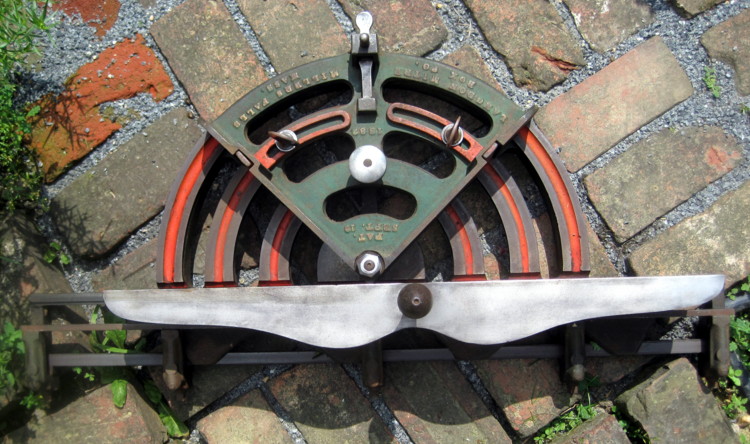
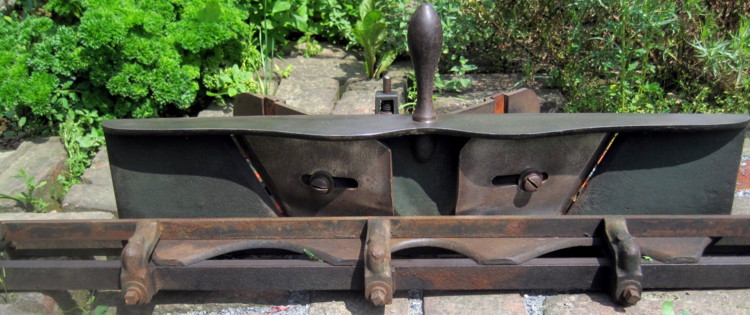
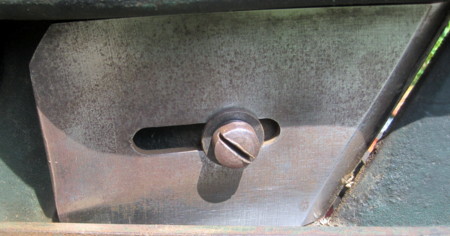
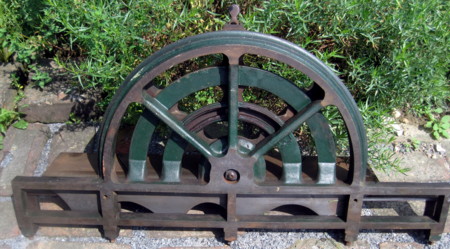
With this
in the shop, you
can
throw away the Stanley 51/52 and competing chute board planes, as well as the
clunky and time wasting mitre trimmers and mitre jacks. This remarkable machine
was patented by David C. Rogers (whose brother was treasurer of the Langdon
Mitre Box Co. in Northhampton, Mass) on Sept. 19, 1882. The machine was sold by
the Millers Falls Co. for a few years before Millers Falls acquired the Langdon
firm about 1890, and added the Millers Falls name to casting. You can read the
relevant history on Randy Roeder’s website
here and
here. A good description of the work and capabilities of this tool is found
here.
This
machine was produced in three sizes, with blades of 2", 3 1/2" and 4" widths.
This is the middle size. The sole of the plane body (that is 22 ¾” long) has
the original linushing marks. This is also true for the bearing surfaces of the
down side cheek and the groove that supports the plane as it moves on the
track. Weighing 60 pounds, the base and machine have great inertia, and the
back and forth movement of the plane works very easily.